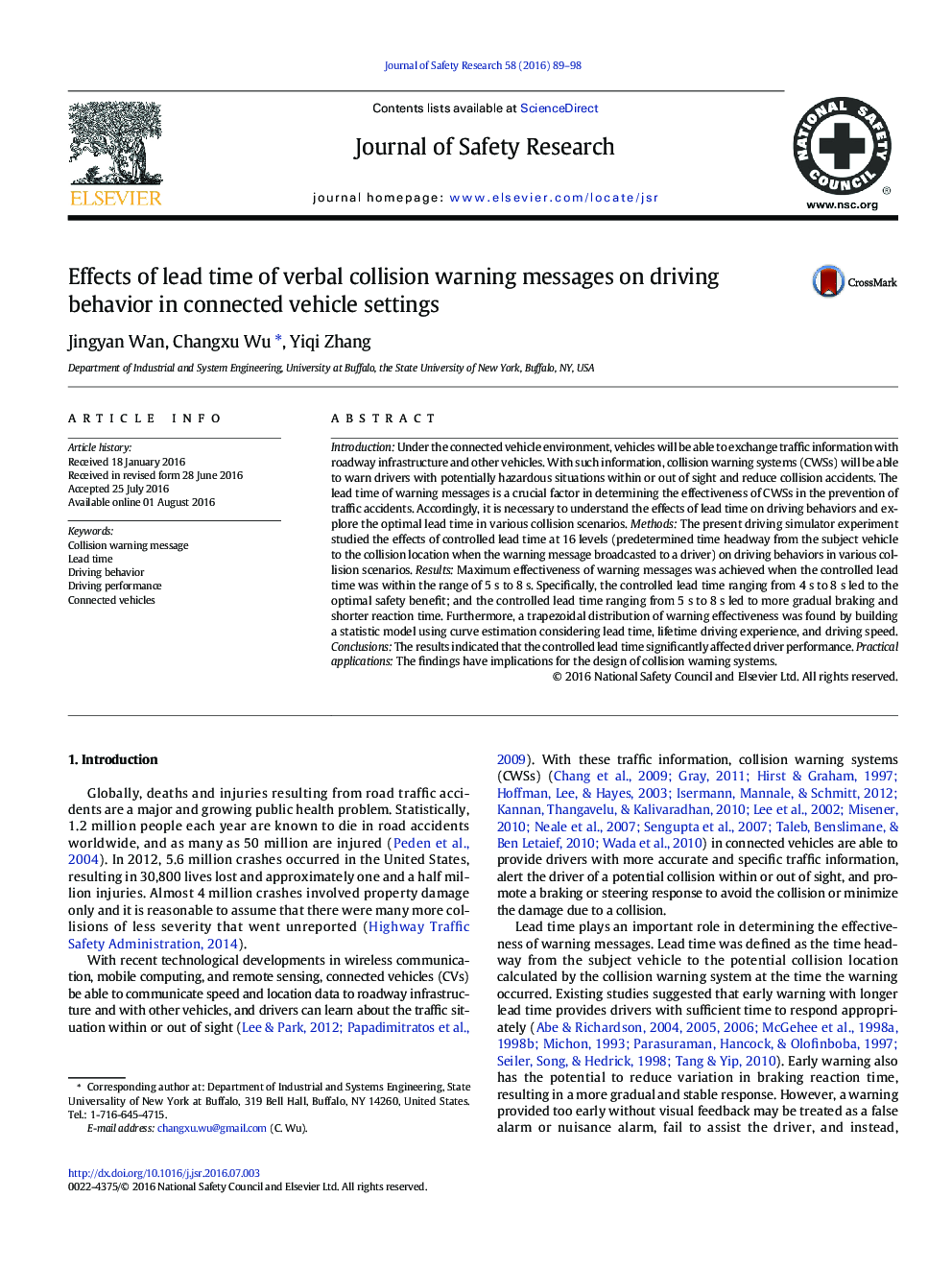| کد مقاله | کد نشریه | سال انتشار | مقاله انگلیسی | نسخه تمام متن |
|---|---|---|---|---|
| 587265 | 1453302 | 2016 | 10 صفحه PDF | دانلود رایگان |
The core findings of the article are:
• The lead time of verbal warning messages significantly affected driver performance.
• Maximum effectiveness of warning messages was achieved when the lead time was 5–8 s.
• The controlled lead time ranging from 4 s to 8 s led to the optimal safety benefit.
• More gradual braking and faster reaction were observed when the lead time was 5–8 s.
• A trapezoidal distribution of warning effectiveness was found considering lead time.
IntroductionUnder the connected vehicle environment, vehicles will be able to exchange traffic information with roadway infrastructure and other vehicles. With such information, collision warning systems (CWSs) will be able to warn drivers with potentially hazardous situations within or out of sight and reduce collision accidents. The lead time of warning messages is a crucial factor in determining the effectiveness of CWSs in the prevention of traffic accidents. Accordingly, it is necessary to understand the effects of lead time on driving behaviors and explore the optimal lead time in various collision scenarios.MethodsThe present driving simulator experiment studied the effects of controlled lead time at 16 levels (predetermined time headway from the subject vehicle to the collision location when the warning message broadcasted to a driver) on driving behaviors in various collision scenarios.ResultsMaximum effectiveness of warning messages was achieved when the controlled lead time was within the range of 5 s to 8 s. Specifically, the controlled lead time ranging from 4 s to 8 s led to the optimal safety benefit; and the controlled lead time ranging from 5 s to 8 s led to more gradual braking and shorter reaction time. Furthermore, a trapezoidal distribution of warning effectiveness was found by building a statistic model using curve estimation considering lead time, lifetime driving experience, and driving speed.ConclusionsThe results indicated that the controlled lead time significantly affected driver performance.Practical applicationsThe findings have implications for the design of collision warning systems.
Journal: Journal of Safety Research - Volume 58, September 2016, Pages 89–98
